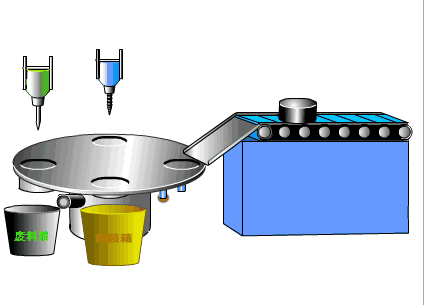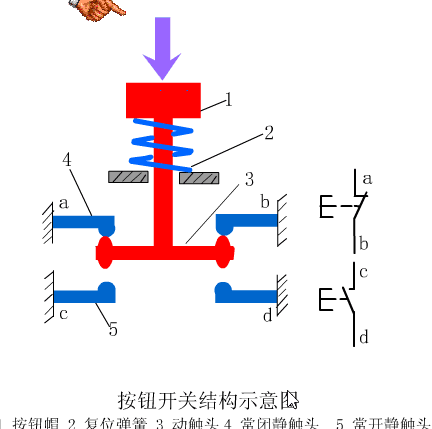It is well known that industrial production and technological development rely heavily on the automation control provided by PLCs. A PLC can be broadly understood as a centralized relay extension control cabinet. In practical production applications, PLCs significantly reduce the costs of industrial control and enhance centralized management and automatic control of equipment. To master PLCs, a solid foundation in PLC basics is essential.

1. From the composition of a PLC, apart from the CPU, memory, and communication interfaces, what other interfaces are directly related to the industrial site? Please explain their main functions.
1) Input Interface: Accepts signals from controlled devices and drives the internal circuit to connect or disconnect through opto-isolators and input circuits.
2) Output Interface: The execution results of the program are output through the opto-isolators and output components (relays, thyristors, transistors) of the output interface, controlling the connection or disconnection of external loads.
2. What are the basic units of a PLC composed of? What is the function of each?
1) CPU: The core component of the PLC, directing it to perform various tasks such as accepting user programs and data, diagnostics, and executing programs;
2) Memory: Stores the system and user programs and data;
3) I/O Interface: The connecting component between the PLC and the controlled objects in the industrial production site, used to accept signals from controlled devices and output the execution results of the program;
4) Communication Interface: Facilitates information exchange with other devices such as monitors and printers;
5) Power Supply.

3. What types of PLC digital output interfaces are there? What are their characteristics?
Thyristor Output Type: Generally can only drive AC loads, with fast response speed and high action frequency;
Transistor Output Type: Generally can only drive DC loads, with fast response speed and high action frequency;
Relay Output Type: Generally can drive both AC and DC loads, but has a longer response time and lower action frequency.
4. What types of PLCs are there based on structural form? What are their characteristics?
1) Integrated Type: Combines the CPU, power supply, and I/O components in one chassis, compact and low-cost, generally used in small PLCs;
2) Modular Type: Divides the PLC into several separate modules, allowing for flexible configuration and easy expansion and maintenance, generally used in medium to large PLCs. Modular PLCs consist of a frame or baseboard and various modules, which are inserted into sockets on the frame or baseboard.
3) Stacked Type: Combines the features of both integrated and modular types, where the CPU, power supply, and I/O interfaces are independent modules connected by cables, making the system both flexible in configuration and compact in size.
5. What is the scanning cycle of a PLC? What factors mainly influence it?
The scanning process of a PLC includes five stages: internal processing, communication services, input processing, program execution, and output processing. The time required to scan through these five stages once is called the scanning cycle.
The scanning cycle is influenced by the CPU operating speed, PLC hardware configuration, and the length of the user program.
6. How does a PLC execute user programs? What stages are included in the execution process?
A PLC executes user programs using a cyclic scanning method, which includes the input sampling stage, program execution stage, and output refresh stage.

7. What advantages does a PLC control system have over a relay control system?
1) Control Method: PLCs use programmed control, making it easy to change or add control requirements, and PLC contacts are virtually unlimited;
2) Operating Mode: PLCs operate in a serial manner, enhancing the system’s anti-interference capability;
3) Control Speed: The contacts in a PLC are essentially triggers, with instruction execution times in the microsecond range;
4) Timing and Counting: PLCs use semiconductor integrated circuits for timers, with clock pulses provided by crystal oscillators, offering high delay accuracy and a wide range. PLCs have counting functions that relay systems do not possess;
5) Reliability and Maintainability: PLCs utilize microelectronic technology, providing high reliability, and their self-diagnostic functions can detect issues promptly.
8. Why does a PLC experience output response lag? How can I/O response speed be improved?
Due to the PLC’s method of centralized sampling and centralized output in a cyclic scanning operation, the input state can only be read during the input sampling stage of each scanning cycle, while the execution results of the program are only sent out during the output refresh stage. Additionally, delays in input and output, as well as the length of the user program, can cause output response lag.
To improve I/O sampling and output refresh, or to implement direct input sampling and output refresh, as well as interrupt I/O and intelligent I/O interfaces, among other methods.
9. What types of internal soft relays are there in Siemens series PLCs?
Input relays, output relays, auxiliary relays, status registers, timers, counters, data registers.
10. How to select a PLC?
1) Model Selection: Consider structural form, installation method, functional requirements, response speed, reliability requirements, and model uniformity;
2) Capacity Selection: Consider the number of I/O points and user storage capacity;
3) I/O Module Selection: Includes selection of digital and analog I/O modules, as well as special function modules;
4) Selection of power modules and programming devices, among other equipment.
11. Briefly describe the characteristics of the centralized sampling and centralized output working method of PLCs. What are the advantages and disadvantages of this working method?
Centralized Sampling: During a scanning cycle, input state sampling occurs only during the input sampling stage, and the input end will be locked during the program execution stage.
Centralized Output: During a scanning cycle, the output image register’s states related to the output are only transferred to the output latch during the output refresh stage, refreshing the output interface. During other stages, the output state remains in the output image register. This working method can enhance the system’s anti-interference capability and reliability, but it can cause lag in PLC input/output response.
12. What working method does a PLC adopt? What are its characteristics?
A PLC adopts a centralized sampling, centralized output, and cyclic scanning working method.
Characteristics: Centralized sampling means that during a scanning cycle, the PLC samples the input state only during the input sampling stage, and the input end will be locked during the program execution stage.
Centralized output means that during a scanning cycle, the PLC only transfers the states related to the output from the output image register to the output latch during the output refresh stage, refreshing the output interface. During other stages, the output state remains in the output image register.
Cyclic scanning means that the PLC needs to perform multiple operations within a scanning cycle, executing them sequentially in a time-sharing manner, continuously repeating the process.
13. What are the main components of an electromagnetic contactor? Briefly describe the working principle of an electromagnetic contactor.
An electromagnetic contactor generally consists of an electromagnetic mechanism, contacts, an arc extinguishing device, a release spring mechanism, a bracket, and a base. The contactor operates based on electromagnetic principles: when the electromagnetic coil is energized, the current through the coil generates a magnetic field, causing the static iron core to produce electromagnetic attraction, pulling the armature and causing the contacts to operate, opening the normally closed contacts and closing the normally open contacts, which are interlinked. When the coil is de-energized, the electromagnetic force disappears, and the armature falls back under the action of the release spring, restoring the contacts, i.e., the normally open contacts open and the normally closed contacts close.
14. Briefly describe the definition of a Programmable Logic Controller (PLC).
A Programmable Logic Controller (PLC) is an electronic device designed for digital operation in industrial environments. It uses programmable memory to store instructions for executing logical operations, sequential operations, timing, counting, and arithmetic operations, and can control various types of machinery or production processes through digital or analog inputs and outputs.
PLCs and their related peripheral devices should be designed to easily integrate into an industrial control system and facilitate functional expansion.
15. Briefly explain the differences in working principles between PLC systems and relay contactor systems.
Different component devices;
Different numbers of contacts;
Different methods of implementing control.
Source: Internet. For learning and communication purposes only. Copyright belongs to the original author. If there is any infringement, please contact for deletion!
 Scan the QR code to follow me!
Scan the QR code to follow me!